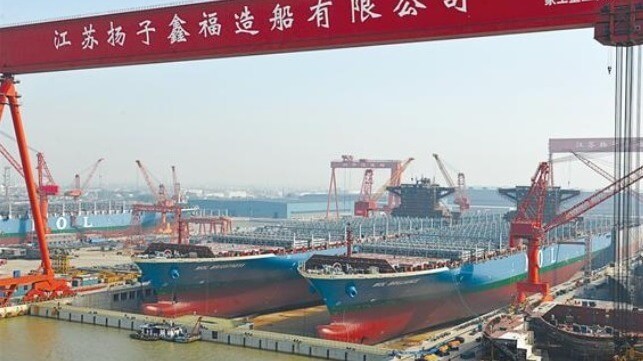A Few Dozen Big Owners Are Driving Asia's Shipbuilding Boom

Asia's largest shipbuilders are flush with orders from Western shipowners, and the prices that newbuild slots now command rival the peaks last seen in 2008, according to Clarksons. But despite the ordering boom - or perhaps because of it - the overwhelming majority of the world's shipowners appear to be sitting it out.
Clarksons' data shows that the average newbuild price is hovering in the range of $90 million, approaching twice the 10-year average of $50 million per hull. Yards are in a favorable position when it comes to price negotiations, thanks to "strong ordering volumes, firm forward cover and inflationary pressure," Clarksons said. The average price is also higher because of the mix of vessel types: Korean (and increasingly Chinese) yards are attracting dozens of LNG carrier newbuild orders per year, and these are high-value, high-margin hulls. Ocean carriers are also placing billion-dollar series orders for container ships with costly dual-fuel capabilities.
Since newbuild prices are high, large shipowners with access to capital have an easier time placing orders - and according to Clarksons, the biggest companies are making the market. More than half of the capacity on order belongs to the top 50 shipowners by tonnage. Ocean freight leader MSC has 100 container ships and 1.2 million TEU of capacity on its own. In the LNG sector, QatarEnergy and its supporting shipowners are collectively ordering more than 100 LNG carriers - the largest civilian newbuild program of any kind in history, valued at more than $30 billion (and growing).
On the other side of the equation, more than 90 percent of shipowners in Clarksons' database have no vessels on order at all.
"A higher share of containership and gas carrier ordering . . . and access to finance have played a role in greater concentration, along with growing uptake of alternative fueling in some sectors and with newbuild price levels, yard lead times and technology uncertainty deterring some owners from newbuild investment," Clarksons explained.
